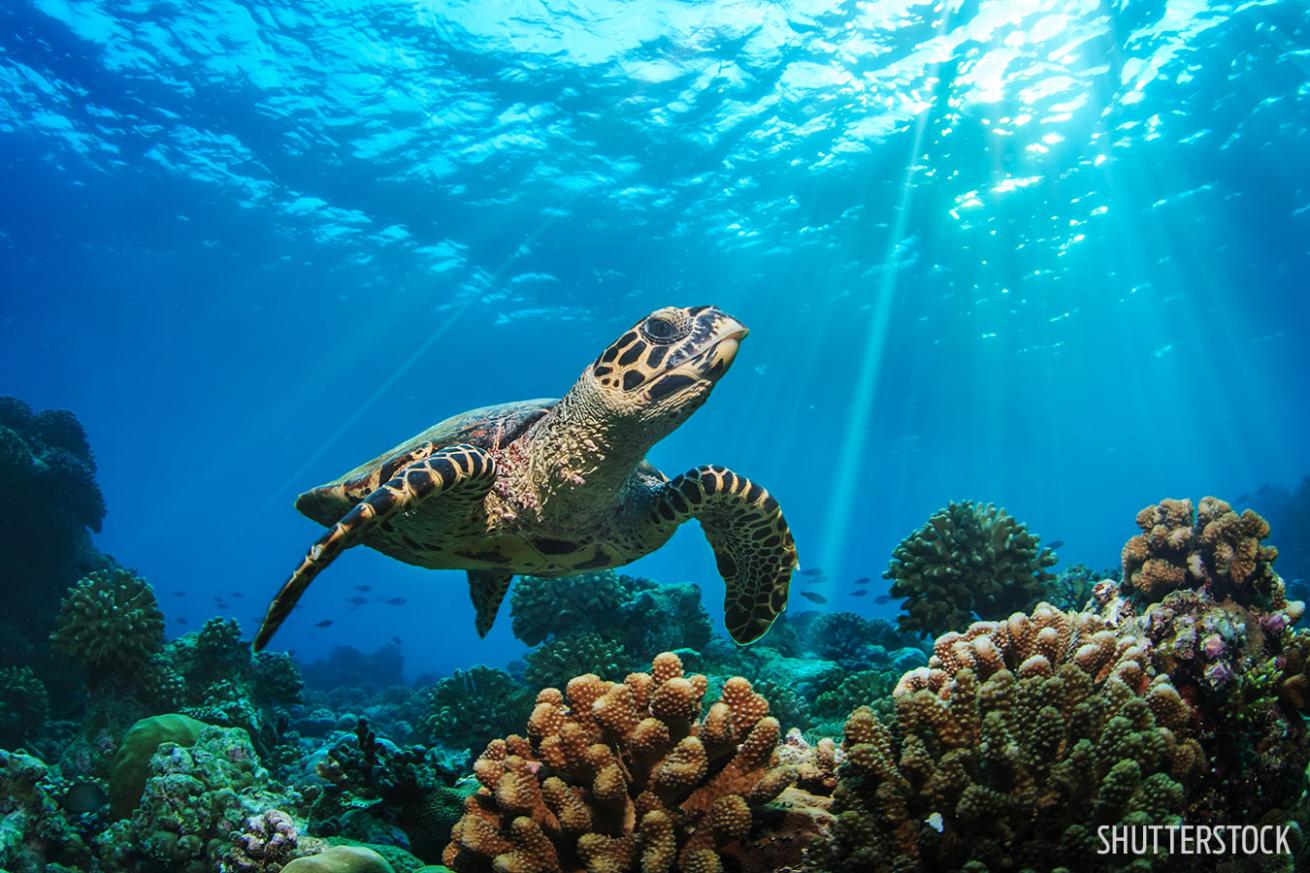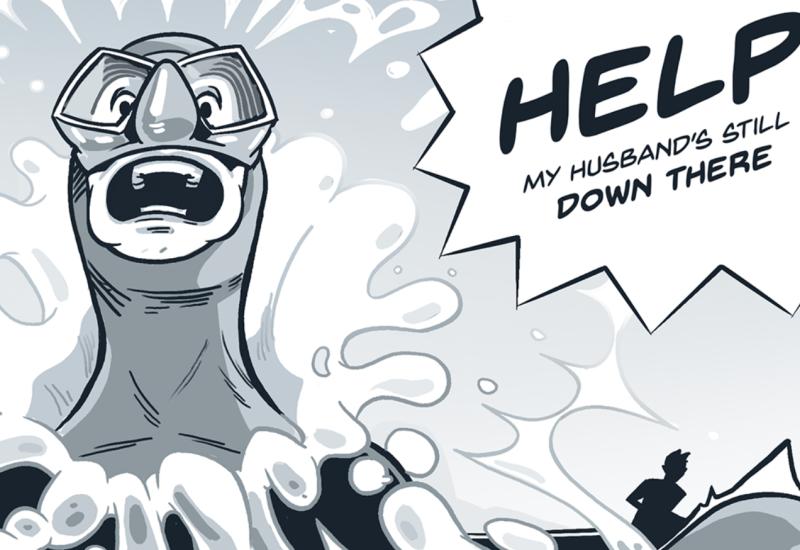Inside a Scuba Diving Honeymoon with Cystic Fibrosis

ShutterstockThe trip of a lifetime became an adventure to remember when Steffgen learned her cystic fibrosis wouldn't keep her out of the water.
One humid Hawaiian morning during my honeymoon, my husband and I went on our first dive together since my certification. Whatever nerves I carried with me to the shore were released into my weightlessness as I descended. We grasped hands as we reached the bottom and returned the ok sign to our dive master.
Swimming along Maui’s Black Rock, schools of fish darted back and forth in their graceful formations. To our left was a wall of hardened lava, blackened and fitted with coral and sea plants, where golden trumpet fish shimmied and morays appeared, mouths agape. To our right, the blue continued as far as I could see. A turtle soared into view, covered in small fish that were picking its shell clean. As it passed, it looked me straight in the eye, seeming to acknowledge me as a guest in its world. I was overwhelmed by all of the vibrant life around me, unsure of where to look next, and every few moments I nervously checked my air gauge and buoyancy. Then a realization hit. Not many other people with cystic fibrosis will ever get to witness this.
I was born with this genetic illness, called CF for short, which affects the way salt proteins move through my cells, leading to thickened mucus and severe respiratory issues, among other symptoms. Although I was lucky to have a relatively mild case of CF—with more sinus problems than lung issues and only mild pancreatic insufficiency—but the time I turned 16 I’d already had three sinus surgeries and dozens of courses of intense antibiotics for chronic infections. Still, my doctors were optimistic: “Avoid hot tubs because of the bacteria they grow, and you can’t go scuba diving, but otherwise you should be able to live a fairly normal life,” a pulmonologist told me when I was in my teens. Compared to the short life expectancy most CF patients faced, this seemed like a good deal.
I’d brought up scuba diving with my doctor during my first CF appointment after getting married. My husband was an Advanced Open Water diver with dozens of dives all over the world, and he wanted to share his favorite activity with me.

Courtesy ImageSteffgen poses underwater with her husband.
During that appointment, a door opened. “There are risks, of course,” my doctor warned me after reviewing my latest test results and charts. Chief among them were the increased chance of pulmonary embolism and the possibility that my sinuses wouldn’t allow me to equalize, “but as of now I don’t see any reason why you shouldn’t try diving.” She then went on to divulge that she was a passionate diver herself, who made regular visits to Hawaii throughout the year to explore the islands’ reefs. It felt like a sign.
Cleared to dive, my husband and I made the most of the underwater world around the Hawaiian Islands. We joined other divers to observe nudibranchs and glimpse endangered seals by Maui’s Molokini crater, and sought out dolphins and octopus around the Big Island. Each time I deflated my BCD and slowly sank towards the ocean floor, I felt enormous relief. Down here, my CF-related fatigue faded into weightlessness. I didn’t have to think about my medicines or treatments. While diving, I was simply part of the living world.
Although I’d made the conscious decision to avoid worrying about how CF would affect me underwater, there was one way in which my disease shaped the experience: Scuba diving with cystic fibrosis gave me an intense appreciation of every moment. Even after the newness of the experience had worn off, my gratitude for it did not. Each time I put on my BCD, I felt a jolt of excitement, knowing I was doing something I’d believed my whole life I could not do.
On our last underwater adventure, my husband and I joined dozens of divers and snorkelers in a Big Island Bay for a manta ray night dive. We jumped in and sank down, following our group to a spot on the ocean floor. Barely a few seconds had passed before giant mantas swooped low over our heads, opening their mouths to consume plankton as they passed through the rays of light from our flashlights. As the bubbles of our exhales tickled our ears, we watched mantas swirl around us in a mesmerizing, slow-motion dance. My husband and I looked at each other, eyes wide open, and I knew we were both thinking the same thing: this is the coolest thing I’ve ever seen. And I felt, as I felt every dive, that I was even luckier than most to witness it.
Related:










